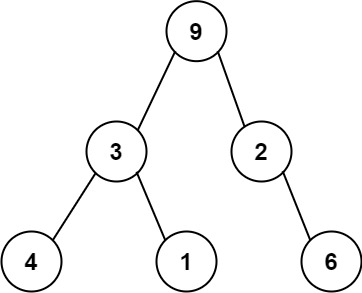331. Verify Preorder Serialization of a Binary Tree
331. Verify Preorder Serialization of a Binary Tree
Description
One way to serialize a binary tree is to use preorder traversal . When we encounter a non-null node, we record the node’s value. If it is a null node, we record using a sentinel value such as '#'.

For example, the above binary tree can be serialized to the string "9,3,4,#,#,1,#,#,2,#,6,#,#", where '#' represents a null node.
Given a string of comma-separated values preorder, return true if it is a correct preorder traversal serialization of a binary tree.
It is guaranteed that each comma-separated value in the string must be either an integer or a character '#' representing null pointer.
You may assume that the input format is always valid.
- For example, it could never contain two consecutive commas, such as
"1,,3".
Note: You are not allowed to reconstruct the tree.
Example 1:
1 | Input: preorder = "9,3,4,#,#,1,#,#,2,#,6,#,#" |
Example 2:
1 | Input: preorder = "1,#" |
Example 3:
1 | Input: preorder = "9,#,#,1" |
Constraints:
1 <= preorder.length <= 10^4preorderconsist of integers in the range[0, 100]and'#'separated by commas','.
Hints/Notes
- N/A
Solution
Language: C++
1 | class Solution { |